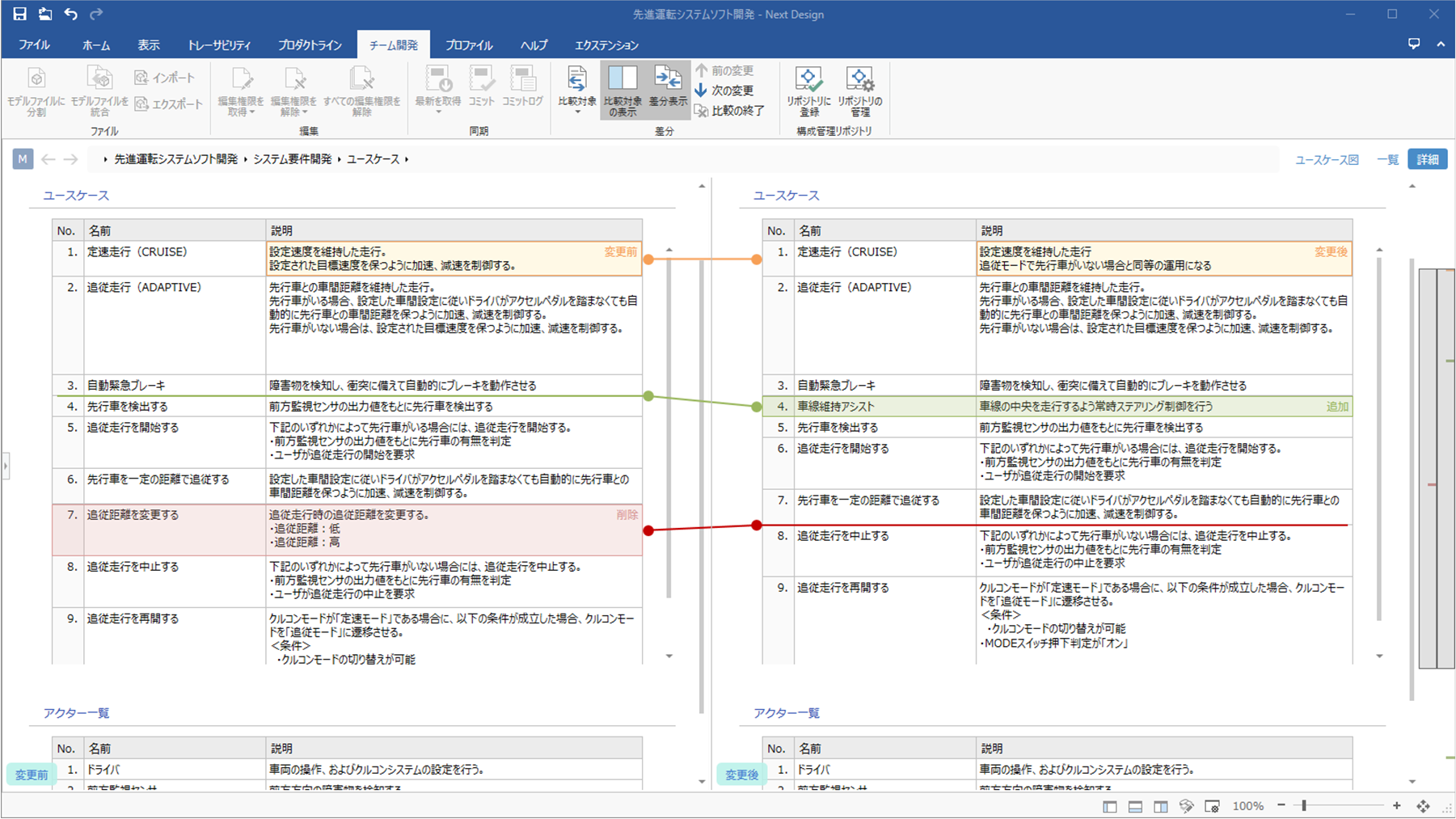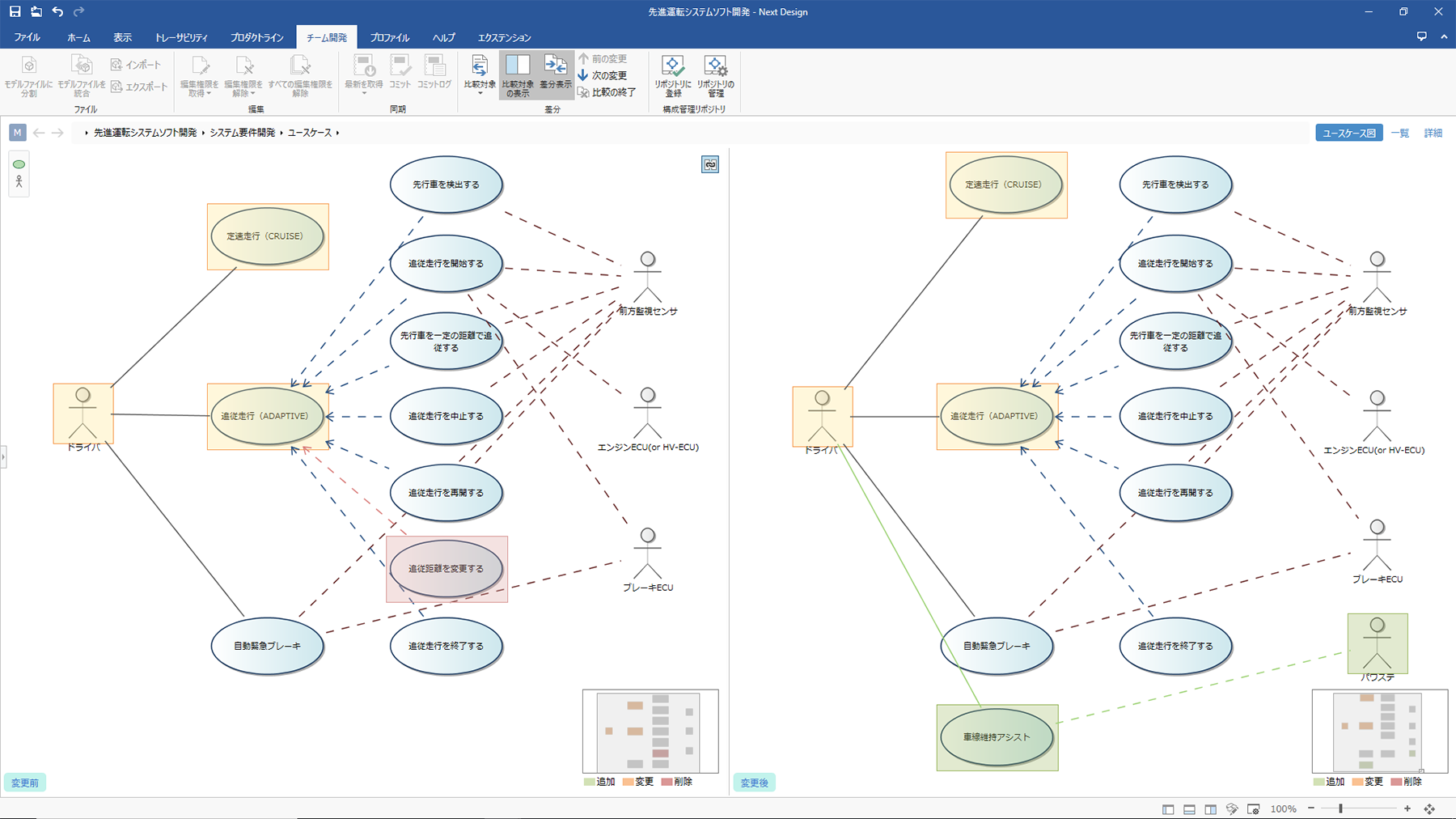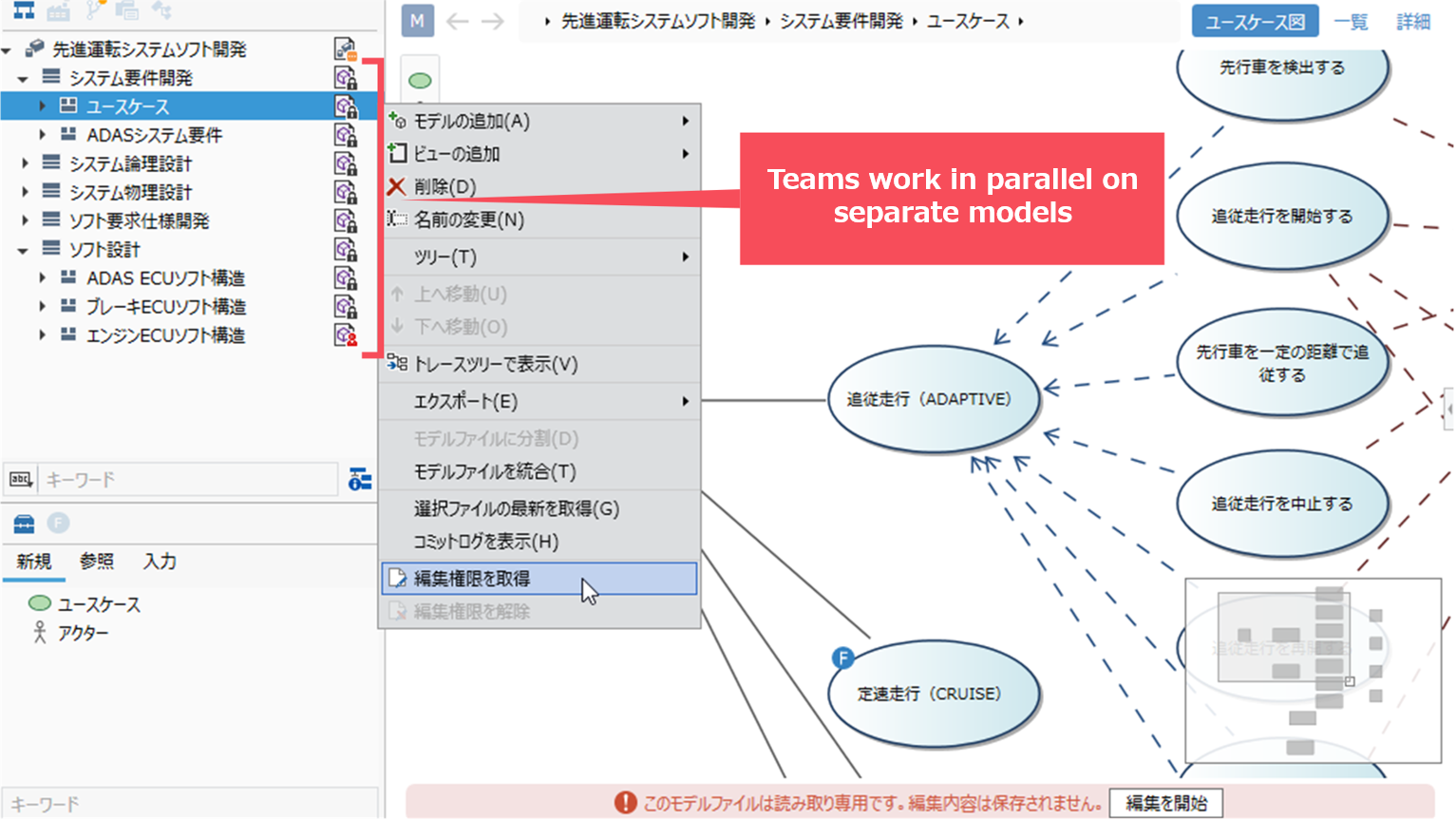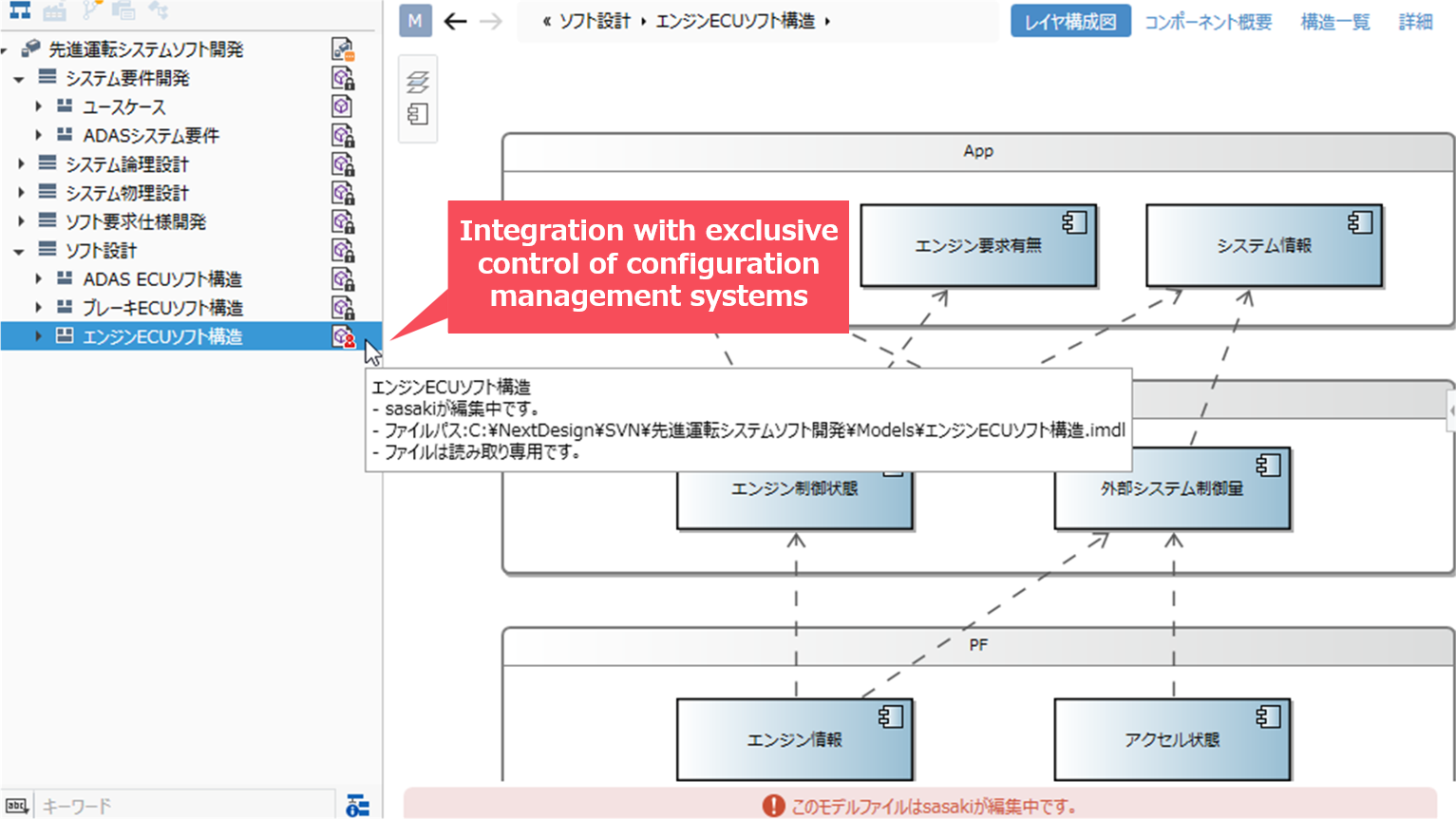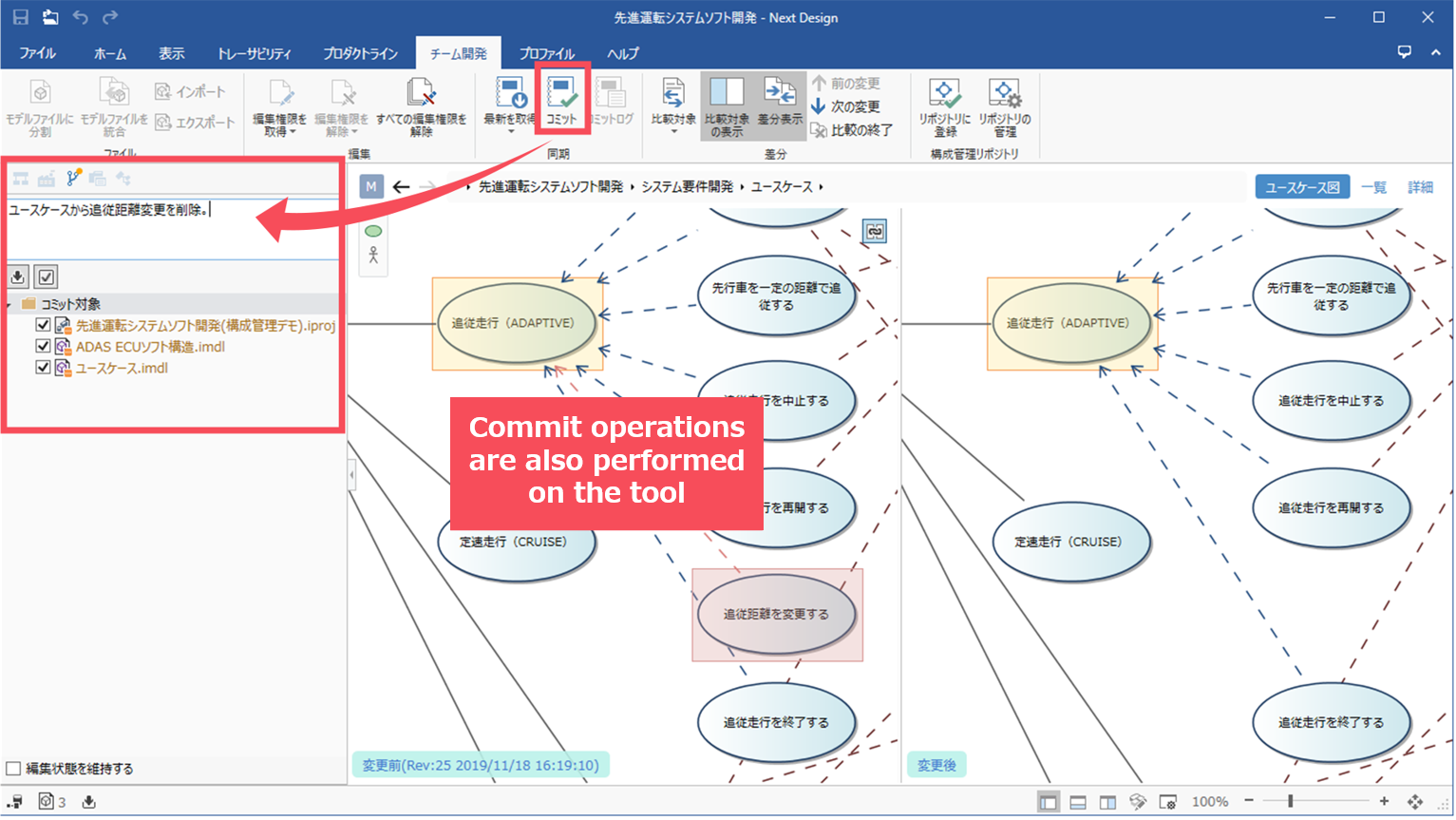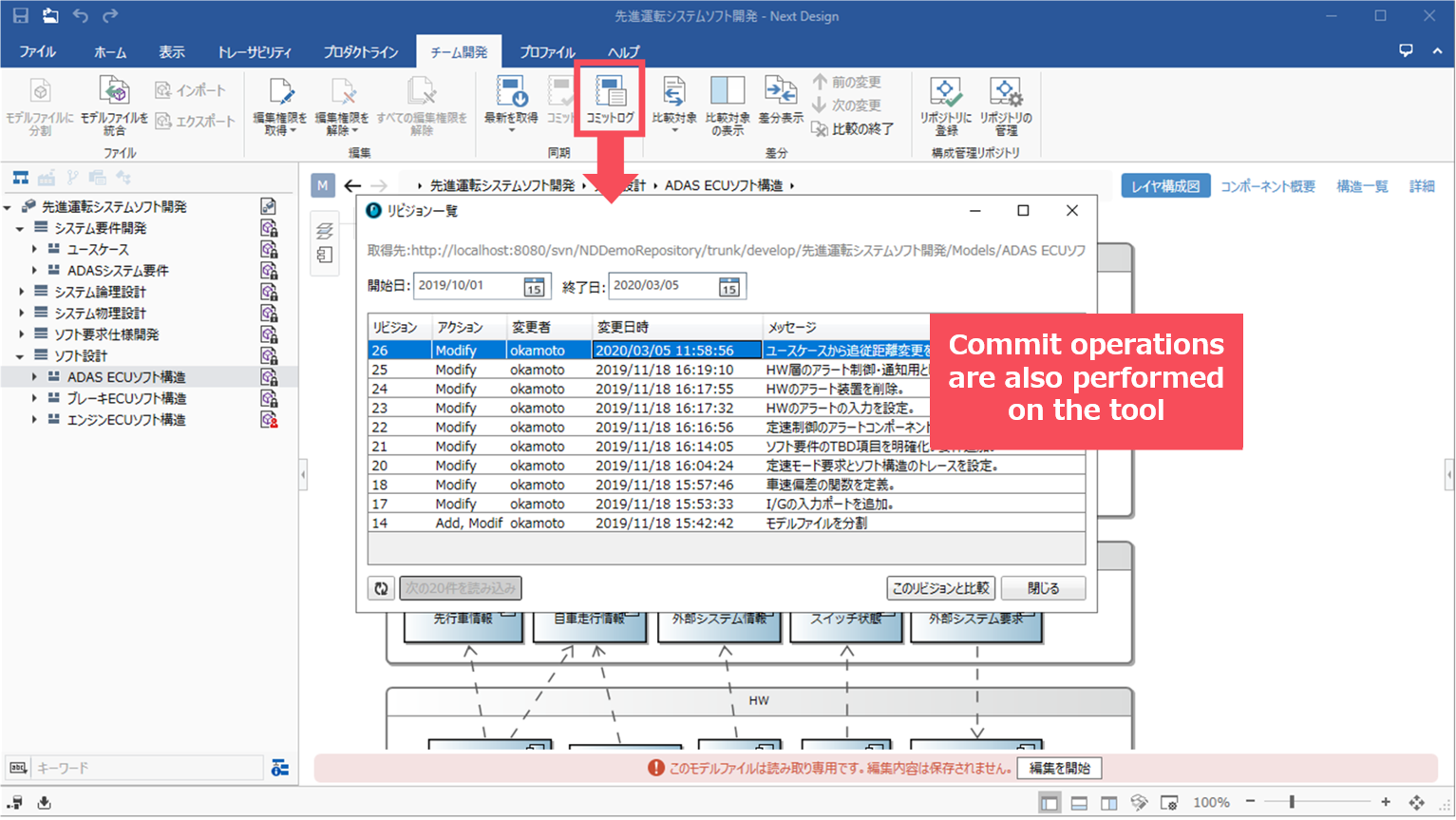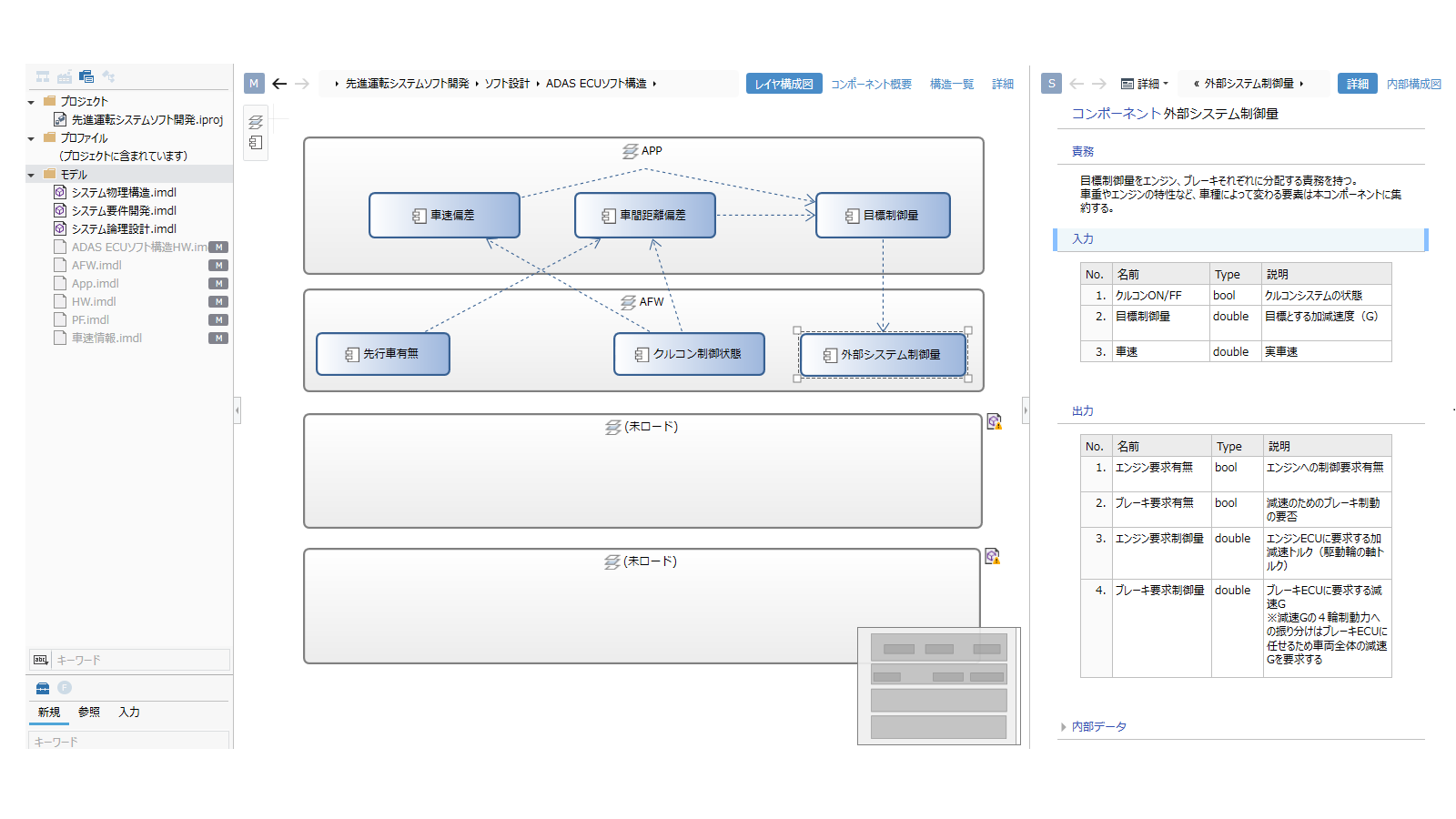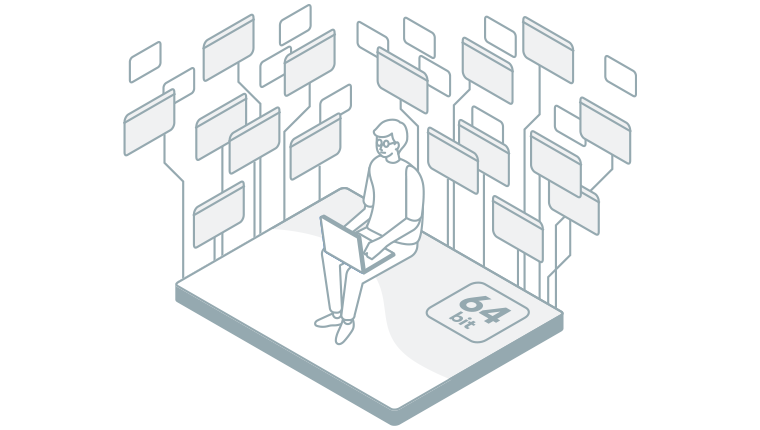Large-scale systems are usually developed in a distributed manner across companies, departments and sites.
Next Design includes a variety of support functions, such as the division of the scope of work for development by multiple teams, and integration with configuration management systems.
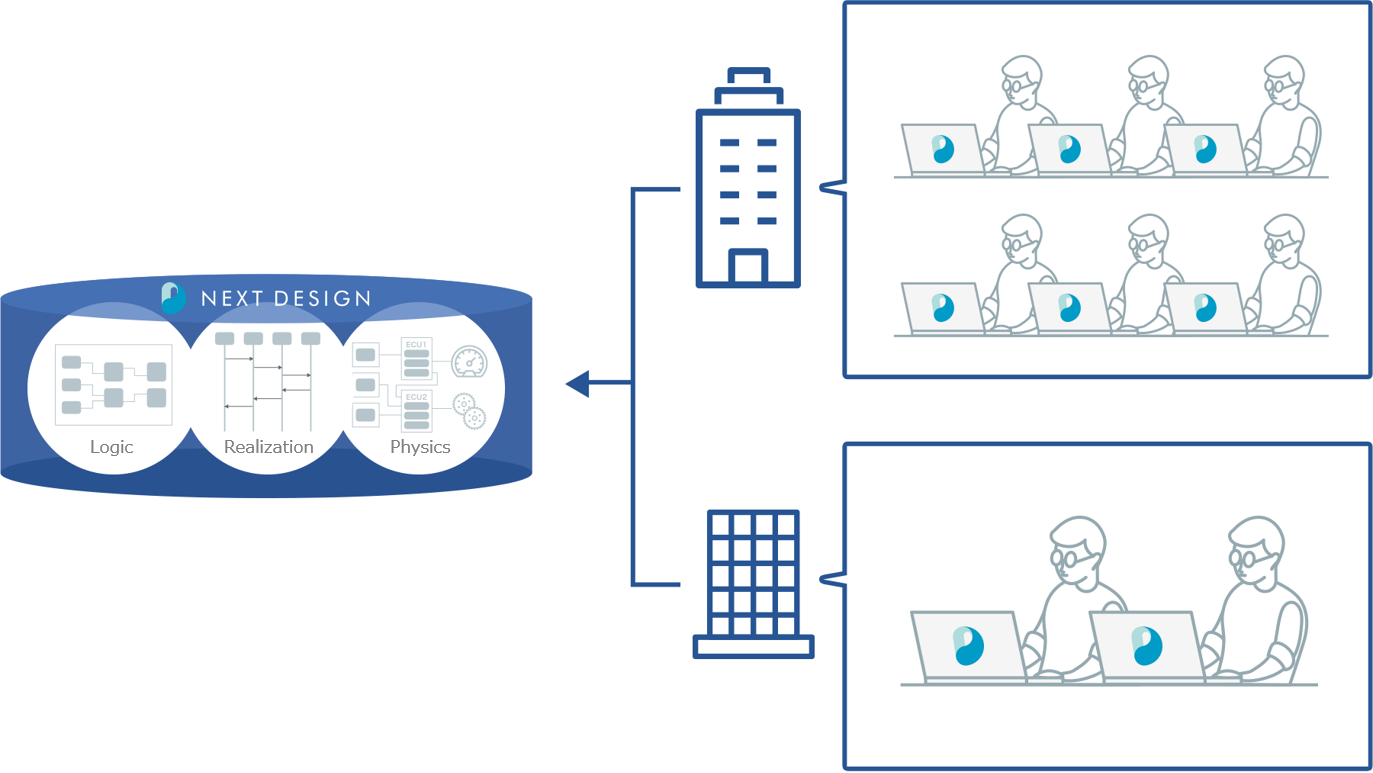
-
Multiview of differences before and after changes
You can compare the differences with previous projects and revisions to identify changes.
The difference view also supports multiple views, so you can intuitively see from different perspectives that you are updating the intended areas as intended.
-
Dividing the design into multiple files
Design information can be divided into arbitrary file units by the user. By dividing the information into files, multiple teams can develop in parallel, or the information can be used as the basis for other projects.
Since only the necessary files can be provided to each team, the design information can be divided according to the scope of responsibility, even in the case of development that straddles multiple companies, such as outsourced development.
Files that have been divided can be further subdivided into smaller files or organized hierarchically in subfolders, allowing for flexible operation according to the team structure. -
Works with configuration management systems
Next Design works closely with Git and Subversion, so operations such as committing and checking history can be completed on Next Design.
-
Partial loading makes light work of even large projects
Only specified portions of a split model file can be read in, and the necessary portions can be read in later when they are needed.
This allows designers to read design data only to the extent they wish to view and edit, allowing Next Design to work quickly and nimbly even on large projects. -
Accelerate process automation with the CLI version of Next Design "NDCLI
NDCLI is a Next Design-compatible, cross-platform tool for automating command-line model validation and generation.
By developing and incorporating extensions for NDCLI, users can automate their own consistency checking, data export, and integration with testing tools.
The tool works not only in Windows environment but also in Linux environment, and can be incorporated into CI/CD to accelerate process automation. -
64-bit version of Next Design for large projects
The 64-bit version of Next Design can handle large projects that cannot be handled with the 32-bit version because it can take advantage of the large memory capacity of the PC.
You can accumulate design assets and handle large model files without worry.



